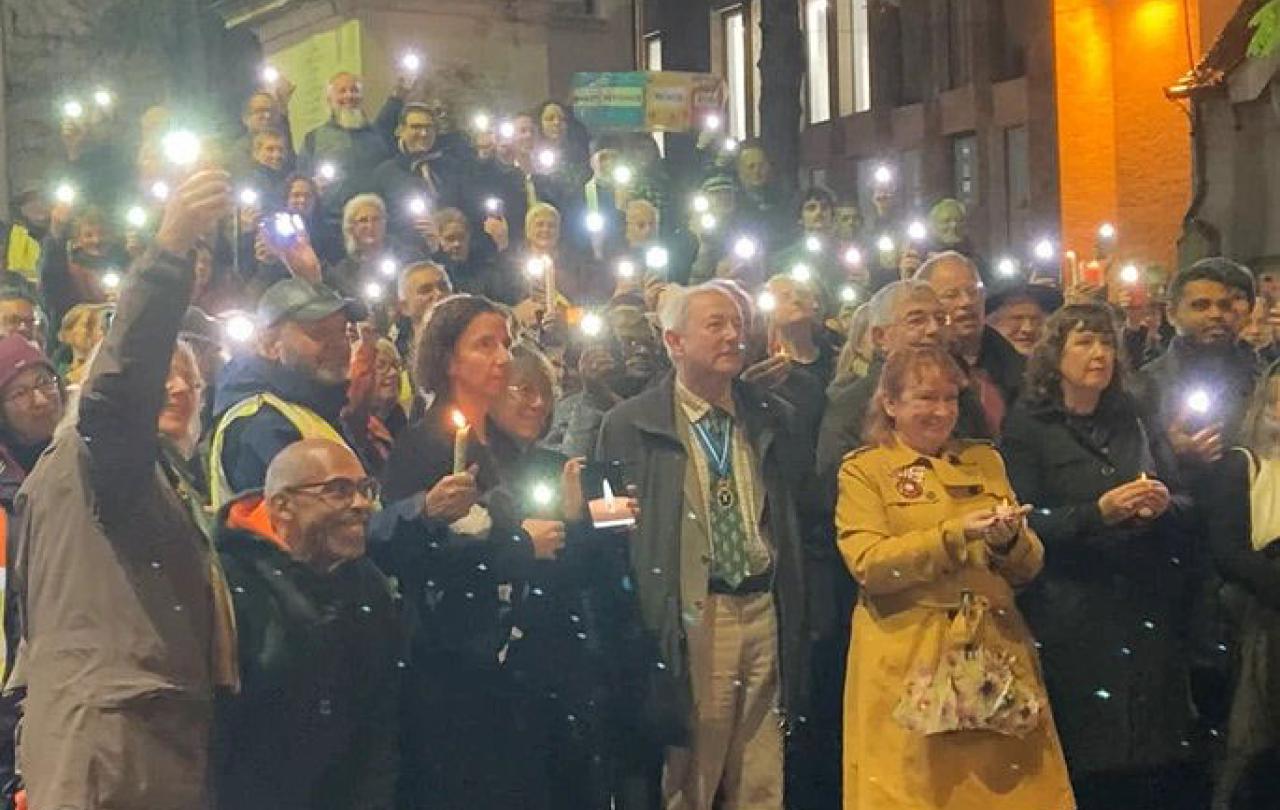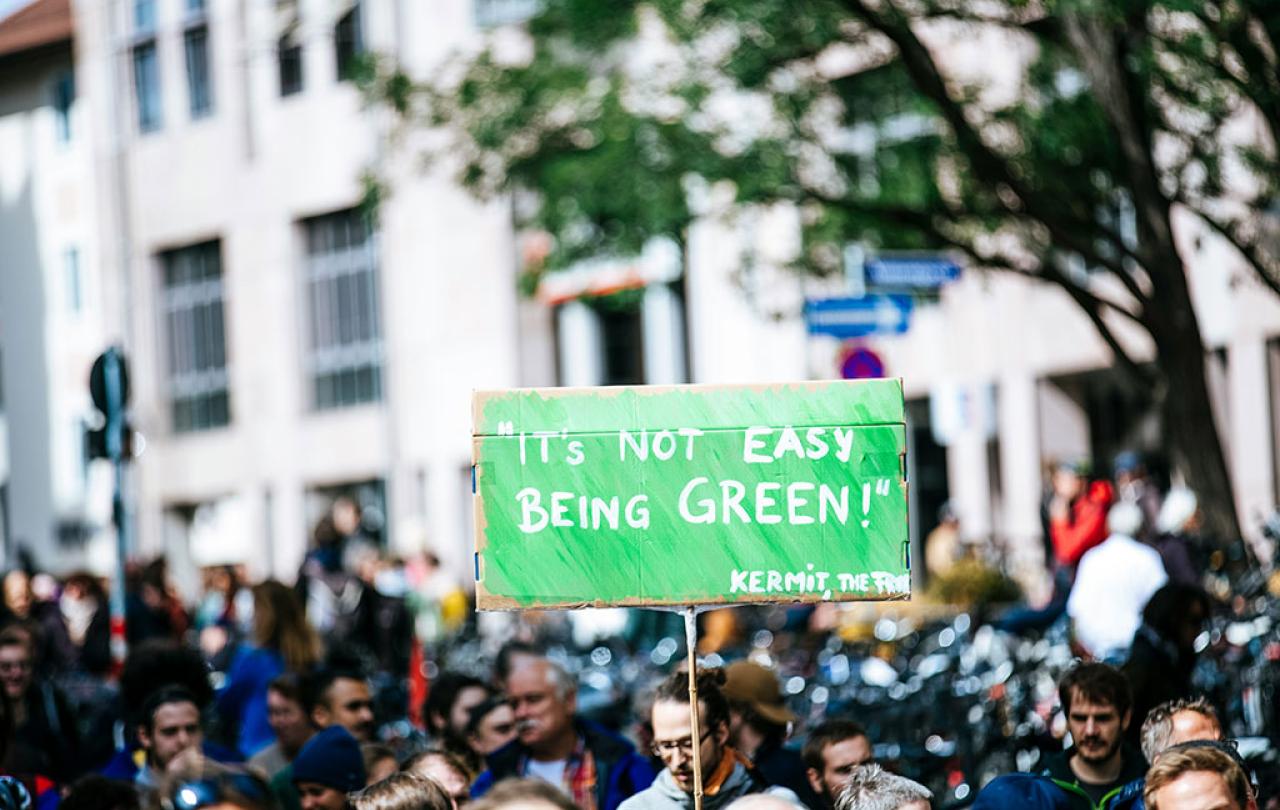
Faces along the bar
Cling to their average day:
The lights must never go out,
The music must always play . . .
Lest we should see where we are,
Lost in a haunted wood,
Children afraid of the night
Who have never been happy or good.
This week, we mark the 85th birthday of W. H. Auden’s poem ‘September 1st, 1939’. He describes four solitary drinkers in New York on the cusp of the Second World War. September 1st, 1939: Hitler invades Poland. Those four faces struggle to find meaning in their lives.
In a later, much longer poem of 1947 (first UK edition, 1948) Auden built on this theme, having lived through the War, to identify an ‘Age of Anxiety’. He wrote, ‘We would rather be ruined than changed / We would rather die in our dread / Than climb the cross of the moment / And let our illusions die.’
I have been reflecting on this of late, especially in light of a recent night vigil for peace, remembrance, and unity at Bonn Square, Oxford, where I live. This took place on 7 October, the anniversary of the Hamas attack on Israel in 2023: the darkest day in Jewish history since the time that Auden wrote his poems.
In an Age of Anxiety, Auden wrote, ‘the world needs a wash, and a week off’. The gathering in Oxford was especially poignant because some 250 people chose to go out in the rain, on their Sunday-evening time off, and in the darkness, to hear prayers and readings from different communities. It was as if the world was awash with people coming together.
The Bishop of Oxford the Rt Rev’d Dr Steven Croft said, ‘Our purpose is simply to be together.’ People simply had to do ‘something in the face of the helplessness that we all feel, in the face of these terrible events’. Louise Gordon, co vice president of the Oxford Jewish Congregation, described people ‘clinging to hope’. Imam Monawar Husain stressed that togetherness as such is a ‘symbol’, a symbol of hope.
Symbols abounded. Candles were lit. In ‘September 1st, 1939’, Auden described ‘Ironic points of light’ which
Flash out wherever the Just
Exchange their messages:
May I, composed like them
Of Eros and of dust,
Beleaguered by the same
Negation and despair,
Show an affirming flame.
The crowd spontaneously joined in with the protest song ‘Where Have All the Flowers Gone’, which was first sung in 1955.
It is striking that so many of the tropes and themes concerning what has gone wrong with the world, from our perspective, were already apparent and received clear expression from 1939 through to the mid- to late-1950s, in terrible events, then in thought, poetry, and protest song, in an age of anxiety.
If there are similarities between Auden’s age and our own, then we should be encouraged by that.
Sociologists described the ‘lonely crowd’ in 1950. This suggests that people seek more approval and acceptance from others as the physical distance between them diminishes and society becomes increasingly geared toward consumption. The capacity to come together for peace, remembrance, and unity becomes far less likely.
Philosopher Max Picard lamented the loss of the ’World of Silence’ in 1952: the capacity to be still. And later, in 1958, the word ‘meritocracy’ was first used to describe a dystopian world in which merit (IQ + effort) reigns, replacing previous relational bonds, a sense of togetherness, exemplified in the gathering in Oxford in 2024.
C. S. Lewis, in Oxford in the late 1950s, identified friendship as a kind of love which is regarded 'in the modern world' as 'quite marginal; not a main course in life's banquet', which is especially true if we bypass the banquet and spend our time at the bar (or, worse, online, at home). Louise Gordon, at the vigil, also spoke of the way in which people were counterculturally 'clasping hands in friendship'.
When sociologists today describe the ‘lonely century’ (Noreena Hertz) or when so many sigh over our inability to sit, or stand, in silence, in some sense at least they have not identified anything new. War crimes are, sadly, all too familiar to us. And recently, the lawyer Stephen Toope identified an ‘age of anxiety’ today.
It is not as simple, however, as saying that we have been anxious for the last seventy years. Auden’s age was also one of creativity of which the Anglosphere has been proud, for instance, around the foundation of the National Health Service in 1948. His generation stared into the abyss. They did not die in their dread.
If there are similarities between Auden’s age and our own, then we should be encouraged by that. Lamentation is as old as love, and the choice is as stark as he put it in his poem 85 years ago: ‘love one another or die’.
The notion of vigil is equally old. Today, vigils are held for peace, remembrance, and unity. In Christian liturgy, however, a vigil is specifically a watch during the night, looking forward to the dawn of a new day. ‘As the night watch looks for the morning’, likewise the people wait for Christ, their saviour.
That silent watch is far removed from the solitary ‘faces along the bar’ who ‘cling to their average day’. Horrible events such as those which took place on September 1st, 1939 or October 7th, 2023 bring people together in common purpose, simply to be together and to cling instead to hope for a better tomorrow.
Anxiety is replaced by hope.
Candles are lit. It may well rain. But song will be sung. And people of good-will, having climbed ‘the cross of the moment’, will show what Auden described: that great ‘affirming flame’.





